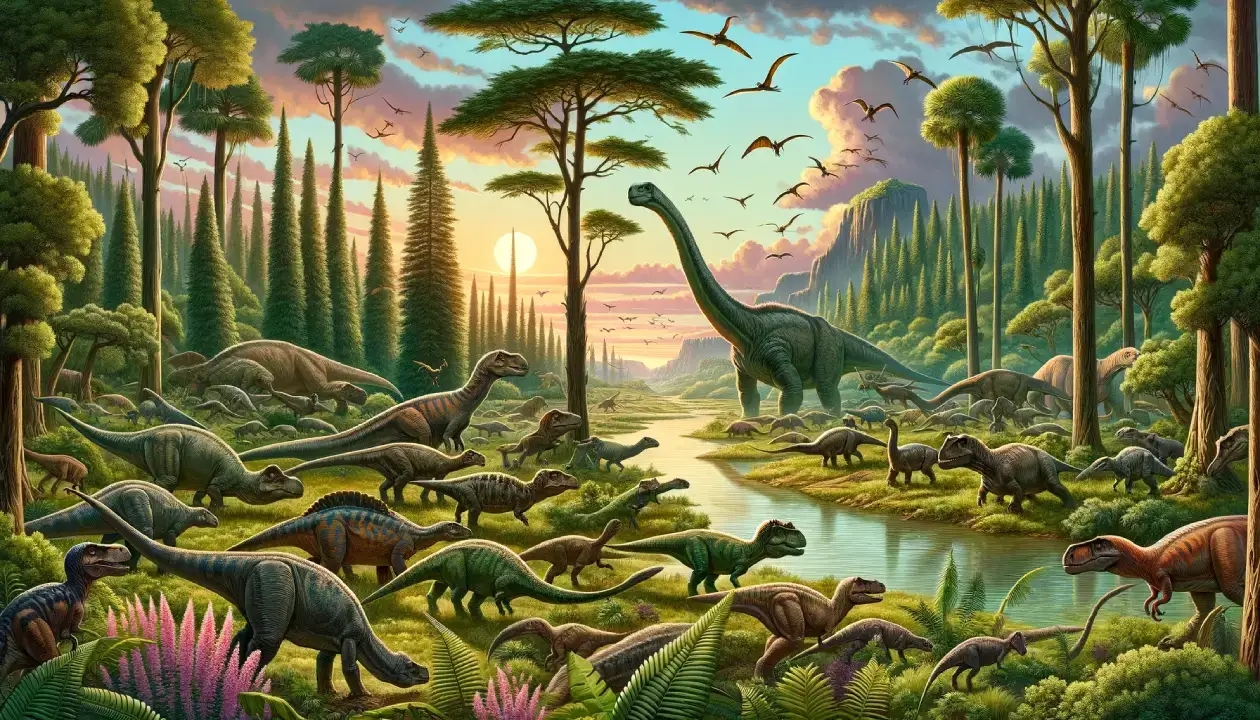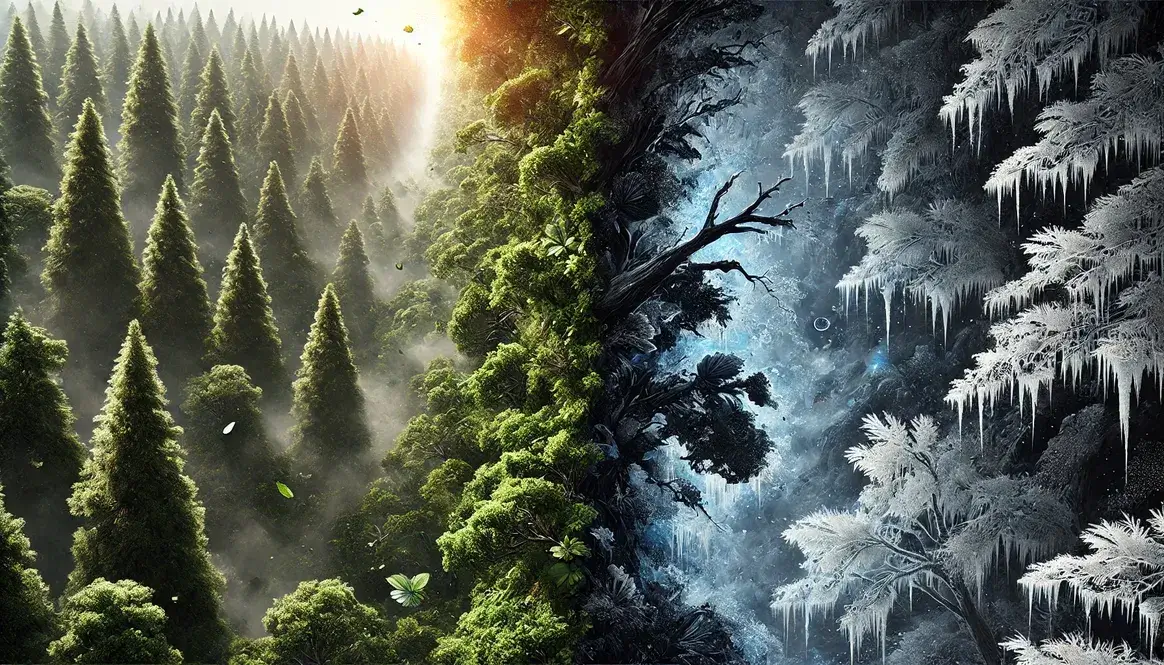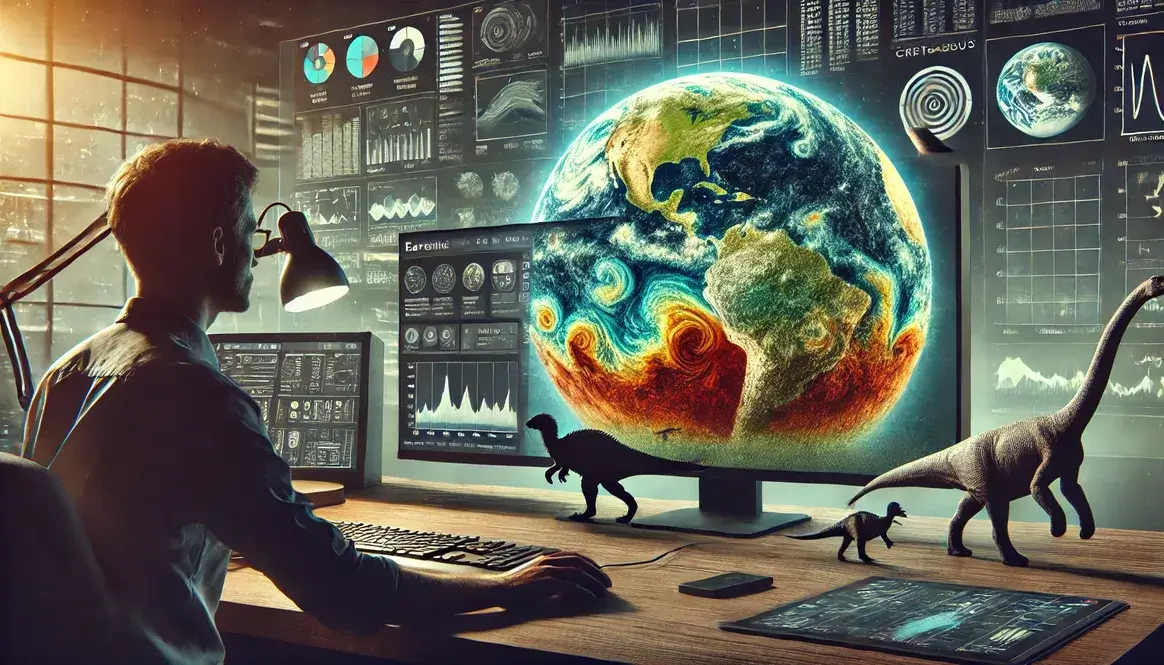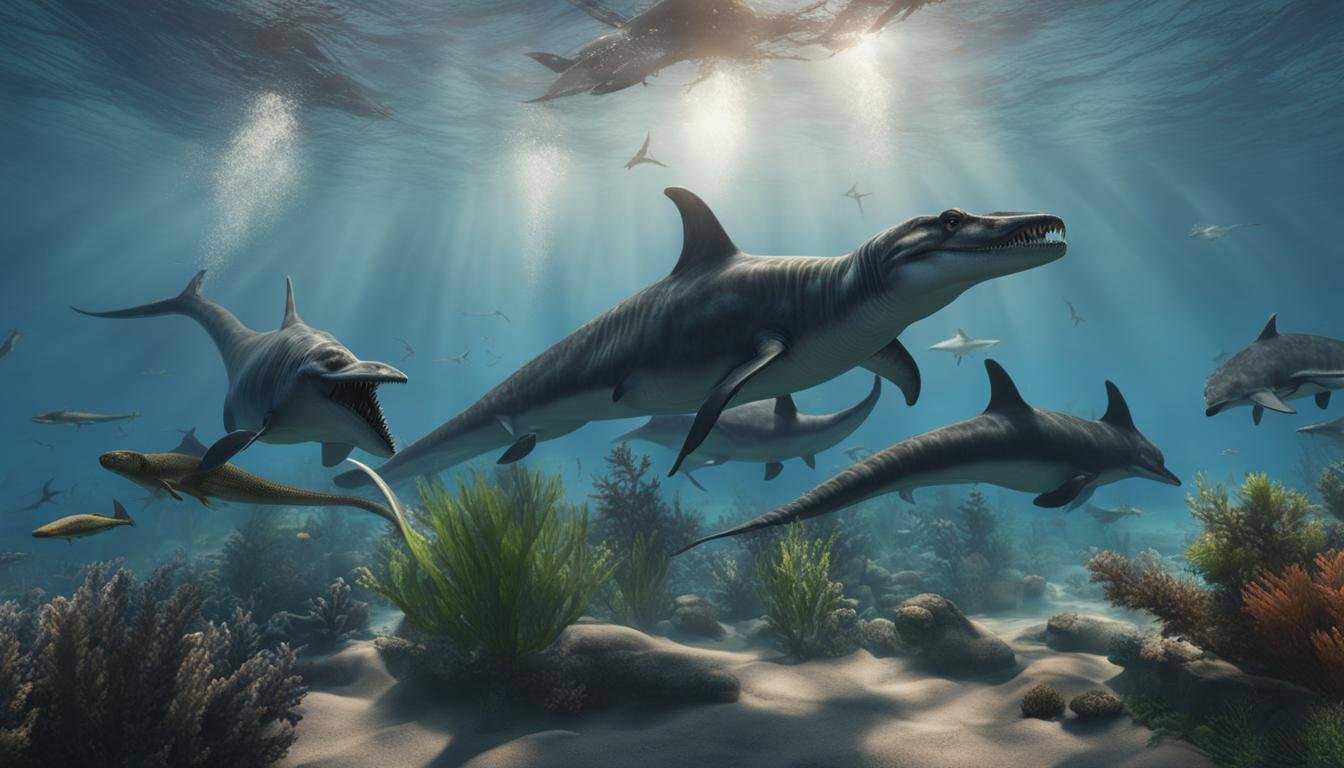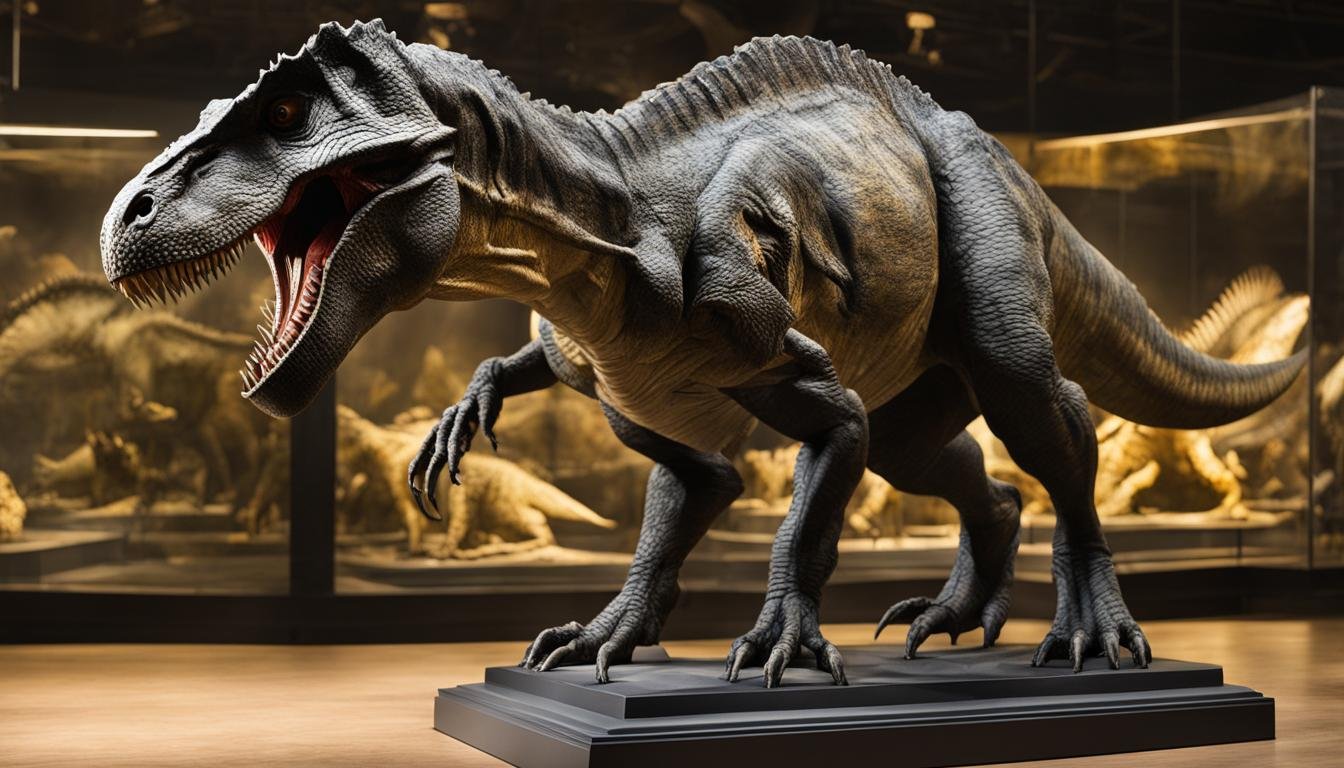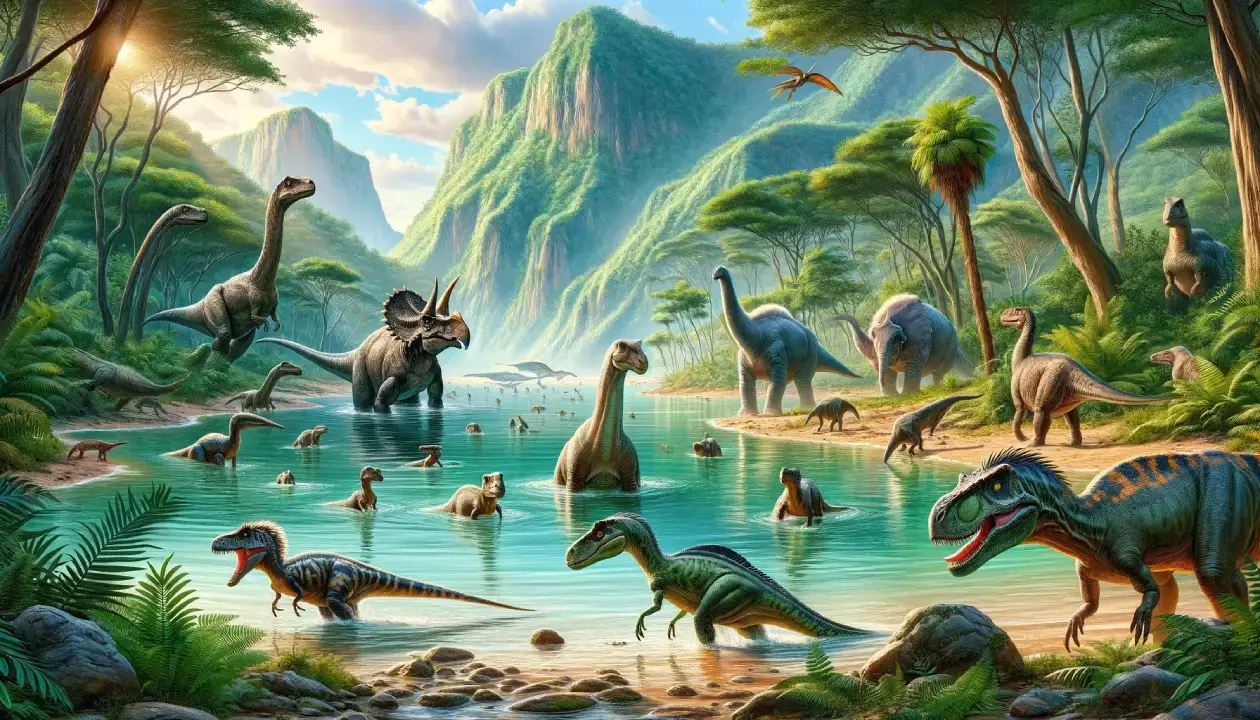When we think of dinosaurs, colossal beasts roaming an ancient Earth come to mind. But these magnificent creatures were more than just passive inhabitants; they played a pivotal role in shaping our planet’s ecosystem. Dinosaurs, reigning for over 160 million years, left an indelible mark on Earth’s history. This article delves into the intriguing question: How did dinosaurs affect the environment?
Understanding the environmental impact of these giant creatures gives us a window into the past and helps us comprehend the interplay between large animals and their ecosystems. From the massive Sauropods to the nimble Velociraptors, each species contributed uniquely to their habitats. Let’s embark on a journey through time to unravel the mystery of dinosaurs’ ecological footprint.
| Key Takeaways | Why It Matters |
|---|---|
| Dinosaurs were ecosystem engineers, shaping their environments through daily activities. | These ancient patterns reveal the long-term impact large animals have on their habitats. |
| Various species had different effects; large herbivores influenced vegetation, while carnivores controlled prey populations. | Understanding these interactions helps us comprehend biodiversity and ecosystem dynamics. |
| The dinosaurs’ extinction led to significant ecological changes, making way for mammalian diversity and eventually humans. | Studying extinction events informs us about ecological resilience and evolutionary biology. |
| Dinosaur migrations were driven by climate changes, which in turn affected global ecosystems. | Migrations are a key factor in the distribution of species and nutrients, affecting global biodiversity. |
| Research into how dinosaurs affected their environment is ongoing, with new discoveries continuously reshaping our understanding. | Continuous research emphasizes the complexity of Earth’s history and the importance of scientific inquiry. |

Dinosaurs as Ancient Landscapers
Reshaping the Land
Dinosaurs were the heavyweight champions of their time, with some like the Argentinosaurus tipping the scales at a staggering 100,000 kilograms (220,462 pounds). Their daily activities – feeding, walking, and even sleeping – left an indelible impact on the terrain.
Geological Footprints
Undertracks – the fossilized remnants of dinosaur paths – reveal the changes these behemoths made to their landscapes. In the Broome Sandstone of Western Australia, a complex network of channels carved by dinosaur movements tells a tale of ancient environmental engineering.
| Dinosaur Activity | Environmental Impact |
| Walking | Creation of pathways, undertracks |
| Feeding | Alteration of vegetation, seed dispersal |
| Nesting | Transformation of land for breeding sites |
Modern Comparisons
The environmental impact of dinosaurs can be likened to that of modern elephants. Elephants are known to create water holes used by other species, clear paths through forests, and maintain grasslands. Similarly, dinosaurs would have shaped their surroundings, creating ecosystems that supported a diverse range of prehistoric life.
Through these actions, dinosaurs were not just passive participants in their environments; they were dynamic engineers of their world. Their legacy is not only in the fossils they left behind but in the very fabric of the landscapes they once roamed.

Impact on Flora and Geological Features
Dinosaurs’ existence spanned an array of ecosystems, from the lush Cretaceous forests to the stark Jurassic deserts. Their interaction with the flora was a dance of mutual influence; as they fed on and moved through the vegetation, they also acted as agents of seed dispersal and landscape modification.
Landscapes Sculpted by Giants
The colossal herbivorous dinosaurs, such as the Triceratops and Brachiosaurus, had a massive impact on plant life. Their grazing habits not only shaped the plant community structure but also promoted the growth of certain plant species over others. They were living pruners, ensuring diversity and forest health.
| Dinosaur Behavior | Impact on Flora and Geology |
| Grazing | Promotion of plant diversity, forest health |
| Walking through vegetation | Seed dispersal, trail creation |
| Nesting | Ground compaction, nutrient deposit sites |
Case Studies: Nesting Transformations
A striking example is the Maiasaura, which means “good mother lizard”. These dinosaurs created vast nesting colonies, much like modern seabirds, transforming and dominating the landscapes they inhabited. Their nesting behaviors compacted the soil and influenced the types of plants that would grow around them, leaving behind a changed ecosystem.
Geological Upheavals
Dinosaurs also influenced geological features. Their sheer weight and movement could cause small-scale geological events, such as creating impressions in soft sediment that would later become fossilized as trace fossils. In drier climates, the movement of large groups of dinosaurs could have been responsible for shifting dune shapes and even causing small avalanches.
By treading across the prehistoric world, dinosaurs acted as natural landscapers, altering not just the surface but the very foundations of their environment. Their footsteps left a legacy etched in stone and soil, with effects that rippled through millennia, offering a window into the dynamic world they once called home.
Dinosaur-Induced Climate Change
The impact of dinosaurs on the environment extended beyond the visible landscapes to the very air that enveloped the ancient Earth. The Mesozoic atmosphere was a stage for a grand play of life and climate, where dinosaurs played a significant role.
Breath of the Giants
Consider the Sauropods, the long-necked giants of the Jurassic. These behemoths consumed vast quantities of vegetation. The digestion of such plant matter likely produced substantial methane, a potent greenhouse gas that could have warmed the planet’s atmosphere.
| Dinosaur Actions | Climate Impact |
| Methane from digestion | Greenhouse effect, warming the atmosphere |
| Changes in vegetation | Altered carbon dioxide (CO2) absorption rates |
| Dust from movement | Potential cloud formation and weather patterns |
Climate Patterns and Dinosaur Life
The fluctuating climate of the Mesozoic era, characterized by shifts in temperature and sea levels, was both a result of and a factor in dinosaur evolution. The shifting climate could have driven dinosaur migration and diversification. As they adapted to and modified their habitats, the dinosaurs themselves may have become agents of climate change, influencing the very environmental pressures that selected for their survival and proliferation.
In a complex feedback loop, the dinosaurs and their environment were interlocked in a dance of mutual change, each influencing the other over millions of years. The study of these ancient patterns helps paleontologists understand not only the past but also the potential future of climate change, drawing parallels between the prehistoric and the present.

Extinction and Environmental Aftermath
The curtain fell on the age of dinosaurs in what can be described as the most dramatic mass extinction event in Earth’s history. This cataclysmic change not only ended the reign of dinosaurs but also set the stage for a radical environmental transformation.
The End of an Era
Approximately 66 million years ago, the Cretaceous-Paleogene (K-Pg) extinction event eradicated nearly three-quarters of plant and animal species on Earth. The dinosaurs, which had flourished for millions of years, were unable to survive this rapid shift. The immediate aftermath saw a collapse in food chains and a significant loss of biodiversity.
Asteroid Impact: A Global Catastrophe
The prevailing asteroid impact theory suggests a celestial body approximately 10 kilometers (6.2 miles) in diameter struck near what is now the Yucatán Peninsula in Mexico. The impact would have triggered global wildfires, launched massive amounts of dust and aerosols into the atmosphere, and induced a “nuclear winter” effect, drastically cooling the planet.
| Consequence | Environmental Aftermath |
| Global wildfires | Immediate loss of vegetation and habitats |
| Dust and aerosols in the atmosphere | Blocked sunlight, disrupted photosynthesis |
| “Nuclear winter” | Rapid cooling, climate destabilization |
Rebirth from Ashes
In the long term, the extinction event paved the way for mammalian dominance and the rise of human ancestors. As the planet recovered, new life forms diversified and filled the vacant ecological niches. The Earth witnessed a profound rebirth, illustrating the resilience of life and the ever-changing nature of our environment.
The demise of the dinosaurs is a poignant reminder of the fragility of life and the profound impact that sudden environmental changes can have on the course of evolution. Their extinction marks not only an end but also the beginning of a new chapter in Earth’s history, one that eventually led to our own existence.

Dinosaur Migration and Environmental Adaptation
The prehistoric world was one of constant change and adaptation, where the movements of dinosaurs across the globe were as much a response to the environment as they were a catalyst for further change.
The Great Migrations
Climate change during the Mesozoic era played a critical role in dinosaur migrations. Fluctuating temperatures and sea levels, along with volcanic activity, would have created a dynamic landscape, prompting dinosaurs to migrate in search of food and favorable habitats.
Tracing the Paths of the Sauropodomorphs
One of the most compelling case studies of dinosaur migration is the journey of the Sauropodomorphs. Evidence suggests these long-necked giants trekked over vast distances to areas like Greenland. Analysis of fossilized teeth has revealed that these migrations were likely driven by changes in CO2 levels and the resulting climate shifts.
| Climate Change Factor | Impact on Dinosaur Migration |
| Temperature and sea-level changes | Opened new migration routes, altered available habitats |
| CO2 levels | Influenced food availability, prompted long-distance migrations |
These migrations were not just a matter of survival; they shaped the ecosystems dinosaurs moved into, altering the competitive landscape and prompting new evolutionary paths for countless species.
The ancient paths of the dinosaurs underscore the profound connection between life and the planet’s climate, a relationship that continues to this day. Their migratory patterns are a testament to the adaptability of life in the face of environmental upheaval, offering invaluable insights into the resilience of ecosystems.
FAQs about How Did Dinosaurs Affect the Environment?
Did all dinosaurs have the same impact on the environment?
No, the impact of dinosaurs on the environment varied widely based on their size, diet, and behavior. Large herbivores, like the Sauropods, often had a significant impact on vegetation and soil compaction, whereas smaller dinosaurs might have had more localized effects.
How did different types of dinosaurs affect their habitats differently?
Carnivorous dinosaurs, like the iconic Tyrannosaurus rex, would have been apex predators, influencing prey populations and the distribution of other carnivores. Herbivores could shape plant evolution by preferential feeding, and migratory species would have impacted nutrient cycles across vast distances.
What lasting environmental changes did dinosaurs leave behind?
Dinosaurs contributed to the fossil record, left behind trace fossils like footprints and nests, and influenced the evolutionary trajectory of flora and fauna. Their extinction also paved the way for the rise of mammals and, ultimately, humans.
Conclusion
As we look back through the lens of time, the dinosaurs emerge as more than just colossal creatures of a bygone era. They were environmental architects, with each species leaving a unique imprint on the prehistoric world. From the deep undertracks in ancient sediment to the subtle shifts in climate patterns, their legacy is interwoven with the fabric of our planet’s history.
The enduring fascination with these magnificent creatures drives ongoing research, with each discovery peeling back another layer of the complex relationship between dinosaurs and their environment. As paleontologists unearth more fossils and apply modern technology to decode the past, the story of dinosaurs and their role in shaping the Earth continues to evolve.
In the grand tapestry of life, the dinosaurs’ tale is a powerful reminder of the interconnectedness of all living things and the profound impact that life can have on the planet. It inspires curiosity and respect for the forces that have shaped our world and encourages us to look forward to future revelations in the dynamic field of paleoecology.

